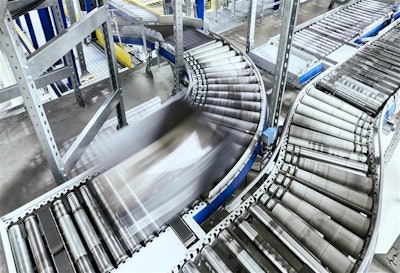
Paramount in today’s fastener manufacturing and distribution world is the importance of data to help manufacturers, suppliers and customers really dig into business operations to improve performance, cut costs and increase margins. “Exposing the data” is perhaps an approach other industry players may want to consider as fundamental to improving operations, strengthening cashflow and providing the best solutions and service possible to customers and partners.
So, what does “exposing the data” mean? Over the past few decades, the reliance on data and data analytics has increased to the point whereby there are sectors and scientific areas of study dedicated to the practices. More and more, companies are not only looking at raw data, but also using sophisticated tools to analyze that data and either predict or prescribe analytical solutions. While the term “exposing the data” may seem elementary, it is far more sophisticated than it appears. Exposing data in a fashion that provides information for business decisions that impact the top and bottom lines is becoming the norm and necessary to do business in the distribution and supply chain spaces.
The more you can glean good, accurate information from pertinent data in a timely fashion, executive leaders have a greater ability to react and address issues as fast as possible, so fastener distributors, manufacturers and suppliers alike can react quickly to address issues and pivot operations for success. For example, through pricing analysis late in 2020, Optimas Solutions saw a trend in steel prices inching up fairly rapidly. As a result, new sourcing options and pricing contingency plans for parts helped lessen some of the material cost burden created by higher steel prices.
But, where does one start when it comes to applying the science of data analysis to the business? Here’s how data analytics with operations.
First, determine what kinds of questions you are trying to answer by exposing the data. Do you want to get more clarity around inventory management and how that affects your company’s supply chain and cashflow? Do you need to know more about supplier responsiveness? How do you understand the stability of a supplier or customer partner financially and their ability to carry inventory? Are you trying to address part manufacturing levels based on buying patterns of customers? Or, and maybe most important, what reporting do other company leaders need to maximize their effectiveness? Whatever the case, you need to know that upfront and clearly articulate it.
Second, determine what kind of data within the organization you should be looking for. There’s a wide swath of data within an organization that one can look at. But, you also must be careful not to “drown” in the vastness of data or use the wrong data for the analysis, whereby skewing the answers to questions. Data comes in all shapes and forms. Figure out whether it is inventory, time-to-task, monetary data such as cashflow or capacity data. Expose the right data to get the right answers to your questions.
Third, determine where the data can be retrieved from – enterprise resource planning (ERP) systems, shipping distribution logs, supply chain management, inventory management, materials sourcing or other systems. For example, customer data is extremely valuable in terms of inventory levels, buying patterns or the cyclical nature of purchases. Understand that there are a number of data sources within the wide spectrum of organizational data that can be captured and analyzed. It is just a matter of pinpointing within the organization and/or the business ecosystem as a whole.
Next, it is important to determine what conditions, both internally and externally, affect analyzing and turning that data into useful business information. For example, if you are pulling data from inventory logs and how that affects the supply chain, you may need to consider product availability. Maybe during some months, small diameter fasteners are less available due to demand because of peak truck production periods. Rules need to be applied to these fluctuations to have a more accurate and full understanding of the data.
Finally, it is important to note that data does not necessarily have to reside at any one of the operational organizations (manufacturer, distributor, supplier or customer). It is important to understand what systems or outside services can help gather and analyze the data needed so it can become useful decision-making information. For example, following pricing indexes for materials such as steel or packaging materials can be helpful when determining pricing surcharges, whether needed or not needed. The more one can tap all kinds of data outside the organization, whether about manufacturing operations and supply chains, the more robust the information will be for executive decision making.
“The devil is in the detail” and “data doesn’t lie” are becoming more dramatically truer each and every day in the fastener manufacturing and distribution sector and in manufacturing and distribution in general. In the end, “exposing the data” offers a host of opportunities for those in the distribution and supply chain ecosystem to improve overall operations and achieve profitable business goals.
You can make data your friend or foe. Understanding, analyzing and interpreting data to make good decisions can be huge for your organization and pay big dividends. However, ignoring it can be just as huge. But, unfortunately, in all the wrong ways.












